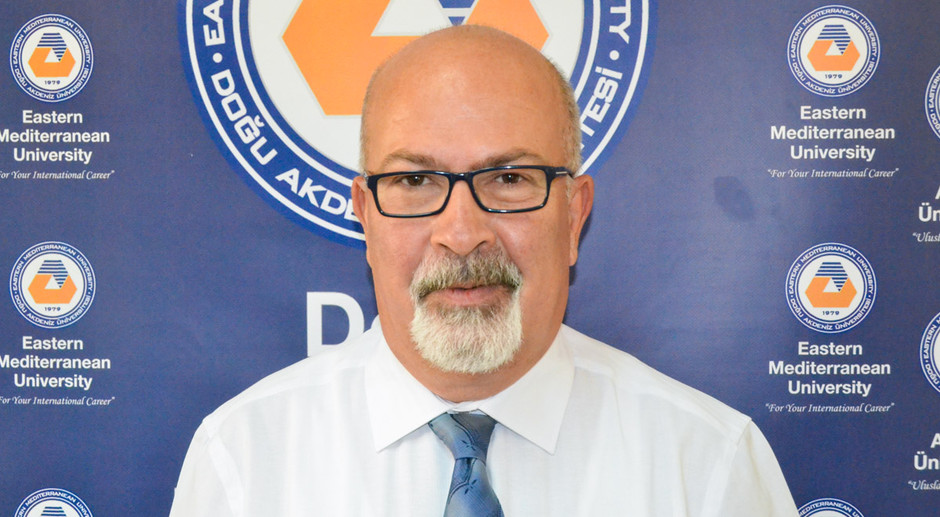Eastern Mediterranean University (EMU) Health Sciences Faculty, Health Management Department academic staff member and public health specialist Assist. Prof. Dr. Levent Eker published an article titled “Historical Background of Vaccination Uncertainty”. Assist. Prof. Dr. Eker’s article touched on the following:
“Atonie Philips van Leeuwenhoek, a Dutch scientist who is considered to be the father of microbiology, invented the microscope in the 17th century and therefore, discovered the existence of microorganisms. These single-cell organisms are regarded as the first living-beings that have come to existence nearly 3-4 billion years ago. Among the microorganisms, infectious diseases occur with the contamination of those that can cause disease in humans. The epidemic illnesses which occur as a result of an infectious disease infecting many people within a short period of time are not only affecting individuals but also the whole society, especially in social and economic manners. For hundreds of years, vaccinations have been the most basic, most reliable and most effective medical method used in fight against infectious diseases.
The smallpox disease, which is believed to appear initially in Asia or Africa after 10.000 BC, spread to Europe during the fifth and seventh centuries and caused many epidemics during the Medieval Age. There is no definite treatment for this health-threatening disease. The letters written by Mary Wortley Montagu, whose husband was the Istanbul ambassador of the Ottoman Empire between 1716 and 1718, mention the medical practices we call vaccination today in order to protect the children from smallpox. With the development of smallpox vaccine by Edward Jenner in 1796, a safe and inexpensive way of protection emerged for humans. With a law enacted in 1853, babies in England and Wales were required to be vaccinated with smallpox vaccine within the first three months of their lives, and parents who did not have their children vaccinated with smallpox were given fines and imprisonment. However, this law fell behind and was insufficient during following years and, a new law enacted in 1867 introduced the mandatory vaccination application which was expanded to cover all children under the age of 14.”
The Historic Background of Vaccination Uncertainty
“The Strategic Advisory Group of Experts (SAGE) providing consultancy to the World Health Organization (WHO) describes vaccination uncertainty as delaying or rejecting vaccination despite the availability of vaccination services. This uncertainty may appear in different ways such as some vaccines being accepted but others not being accepted, delaying vaccination procedures, rejecting vaccination with an uncertain mind or completely rejecting vaccines. SAGE mentions three basic reasons for vaccination uncertainty; low risk perception of vaccine-preventable diseases, inadequate access to vaccination services and, low level of confidence due to the safety of vaccines and the inadequacy of the service providers' ability to advocate for vaccination. Today, the problem of getting vaccines still exist in many countries all around the world, either underdeveloped or developed. Being aware about the historical background of vaccination uncertainty will be helpful in finding solutions for this problem.
According to the existing data, the first ever vaccination uncertainty was experienced in England. Immediately after the enforcement of the mandatory vaccination laws against smallpox enacted in 1853 and 1867 for the control of smallpox in England, vaccine instability and rejection began in Ipswich, Henley, Mitford and some other towns. Activists leading anti-vaccine societies claimed that personal liberty of people were put under pressure and people’s right of choice was taken from them. According to these groups, government was attacking people’s civil liberty by using the public health issues. There are even some medical practitioners among these activist groups. An abstract notion such as freedom must be concretized. At the meeting of the House of Commons on Friday, 11 June 1880, a representative claimed that vaccination could not prevent smallpox, compulsory vaccination was unfair, the cases of scarlet fever, typhoid, syphilis, cancer, tuberculosis and diphtheria increased after vaccination and that he obtained this information from physicians.”
Smallpox Vaccine Campaign
The smallpox epidemic affecting the Europe reached to Stockholm in the fall of 1873. A campaign against smallpox vaccinations was started in Stockholm, Sweden in 1873-1874 due to the religious protests, concerns regarding the efficiency of the vaccine and violations of personal rights. During this period, the vaccination rates all around Sweden was nearly around 90%, however the rates in Stockholm was 40% because of this campaign. The number of people dying from smallpox in the city was only 43 in 1872 but this number jumped up to 191 in 1873 and finally reached 1,191 in 1874. As a result of the increased mortality rates during the years, city re-started a smallpox vaccination campaign and the numbers of death fell down to single-digit numbers in the following years.
In 1940s, nearly 60-70% of children in early childhood period in England had pertussis disease. Diphtheria-Pertussis (Whooping Cough) -Tetanus (DPT) vaccine has been routinely used in England for more than 20 years in 1970. In January 1974, a group of doctors who worked in Children’s Hospital published an article that claimed total of 36 children experiencing neurological complications following their DPT vaccinations. Television broadcasts and newspapers started to dramatize the tragic stories of children who were allegedly disabled due to brain damages caused by the vaccine. There has been a change in the attitudes of parents with children at the age of vaccination and even some physicians against vaccination. Stories’ of two mothers (Rosemary Fox and Rene Lennon) were published in Birmingham Post. According to the stories, their children Helen and Joanne became permanently disabled after they got the vaccines. Fox and Lennon reached out to other mothers who experienced similar difficulties and asked them to participate in their campaign against vaccines. Parents were encouraged to establish a group called “The Association of Parents of Vaccine Damaged Children”. As a result of these negative publications, a rapid down fall was observed in the rates of Pertussis vaccinations. In 1977, the rate of pertussis vaccinations fell back to 33% from 77%, even reaching to 9% in some counties which later caused a pertussis outbreak all around the country. Until 1979, total of 102,500 children had pertussis in England and 36 children, most of them babies, died in this epidemic.
Anti-Vaccine Movement Results in Serious Public Health Problems
The anti-pertussis vaccination movement in England spread to the United States of America (USA) in 19 April 1982. On that day, WRC-TV located in Washington, D.C. broadcasted a documentary program titled “DPT: Vaccine Roulette”. The DPT vaccine and, especially the pertussis component of the vaccine which claimed to be the reason of severe brain damages, seizures, and delayed mental and motor development. Many parents who watched the documentary not only from USA but all around the world started to reject the vaccines. The number of lawsuits filed against vaccine producers and the number of compensations paid by these companies reached a severe level which caused one of these producers to stop their production and withdraw from the market. This led to a serious public health problem. Therefore, on 18 October 1986, the United States Congress approved a new law that protected the vaccine producers.
In 1998, probably the most important milestone causing the anti-vaccine movement was the article published in “Lancet” written by Dr. A. Wakefield and his colleagues which claimed that Measles, Mumps, and Rubella (MMR) vaccine was associated with autism. Even though, the majority of the authors withdrew their signatures from the article, the first published version was sufficient enough to cause a negative effect on the public. It took many years to clear off this negative perception. In the 6 February 2010 issue of the Lancet, the editor denied the allegations of "especially, the children in the original document were" consecutively referred "and the study was" approved "by the local ethics committee. For this reason, the publication has been removed from the literature with the words "we are withdrawing this article completely from the published record". Similar claims were put forward in England causing uncertainty among the anti-vaccine society. A journalist called Brian Deer made a behind-the-scenes research on the matter and proved that behind the claims regarding the Measles, Mumps and Rubella vaccines that horrified people all around the world was actually false data.
Groups Rejecting the Vaccine
In the Netherlands, after 14 years without any endemic cases, a polio epidemic occurred between September 1992 and February 1993. Two of the children died among the total of 71 children who were diagnosed with polio. None of the children diagnosed with polio were vaccinated and all but one are members of a socially and geographically clustered group that rejects the vaccine for religious reasons. Orthodox Protestant minorities live in these clustered geographic areas and are referred as the "Bible Belt”. The Orthodox Protestant opposition against the vaccines dates back to the 19th century. Orthodox Protestant doctor Abraham Capadose published his objections against vaccination in 1823. According to the Capadose, both the health and sickness are gifted by the God and, humankind shall not intervene with the act of God. Capadose referred to vaccination as intentionally endangering human-life by intervening God’s plans. Capadose saw smallpox vaccination as a product of the worship of anti-Christian science. Although not all Orthodox Protestants in those years agreed with Capadose, he had many sympathizers. The start of mandatory smallpox vaccination prior to the commencement of school in 1872 which continued until 1939 increased the Orthodox Protestant attitudes against vaccination.
Increase in the Number of Polio Cases
In the early years of the 21st century, conservative religious leaders in northern Nigeria, suspicious of western medicine, advised their followers not to get their children oral polio vaccine. The people believe that diseases depend on the will of God and that only God can protect them against diseases that everything good and bad will come from God. In addition, the public's risk perception levels against polio are extremely low. As a result of the rumor that oral polio, which has spread rapidly among the public, is an American project aimed at sterilizing Muslim girls, the anti-vaccination in the country has grown rapidly. As a result, the number of polio cases, which was 202 in 2002, increased to 1,143 by 2006. The virus detected in this epidemic crossed the country borders and entered other countries.
In the 1999s, ethyl mercury and aluminum hydroxide added to vaccine vials to increase the effectiveness of vaccines and maintain their stability until they are administered have been the focus of vaccine uncertainty and rejection. This opposition to vaccination, which was carried out with the participation of some entertainment and popular culture celebrities, negatively affected the decision-making process of the parents. These celebrities used fear-based messages to avoid and impress parents from vaccination.
In a nutshell, it can be said that vaccine uncertainty and rejection are triggered by more than one complex and variable factor as a result of this brief historical evaluation. The spread of personal experiences in the form of rumors or through print and visual media is also an important factor in vaccine uncertainty. Negative messages given to parents by non-medical professionals regarding vaccination also played a role in vaccination opposition.”




